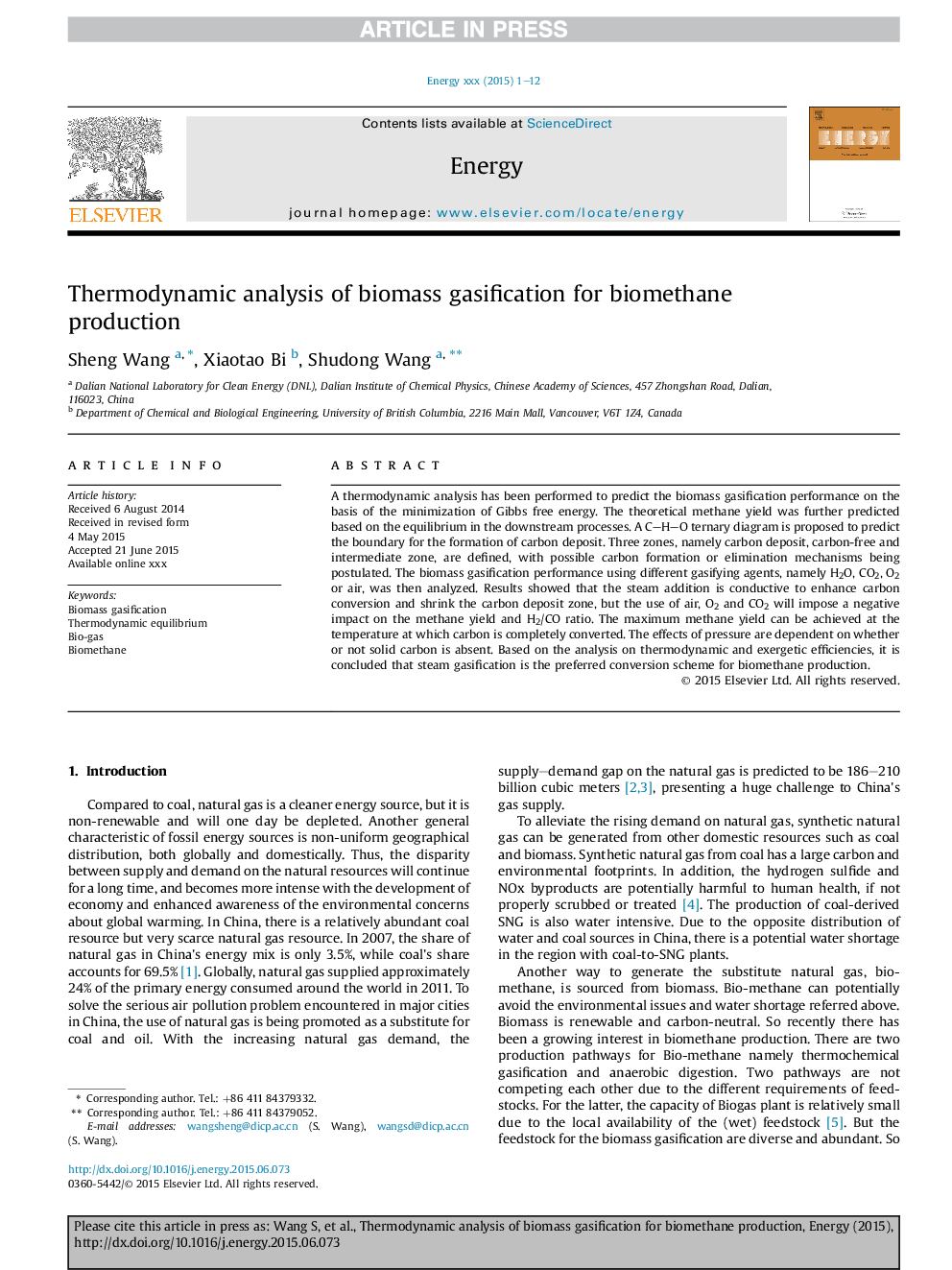| Article ID | Journal | Published Year | Pages | File Type |
|---|---|---|---|---|
| 8074361 | Energy | 2015 | 12 Pages |
Abstract
A thermodynamic analysis has been performed to predict the biomass gasification performance on the basis of the minimization of Gibbs free energy. The theoretical methane yield was further predicted based on the equilibrium in the downstream processes. A C-H-O ternary diagram is proposed to predict the boundary for the formation of carbon deposit. Three zones, namely carbon deposit, carbon-free and intermediate zone, are defined, with possible carbon formation or elimination mechanisms being postulated. The biomass gasification performance using different gasifying agents, namely H2O, CO2, O2 or air, was then analyzed. Results showed that the steam addition is conductive to enhance carbon conversion and shrink the carbon deposit zone, but the use of air, O2 and CO2 will impose a negative impact on the methane yield and H2/CO ratio. The maximum methane yield can be achieved at the temperature at which carbon is completely converted. The effects of pressure are dependent on whether or not solid carbon is absent. Based on the analysis on thermodynamic and exergetic efficiencies, it is concluded that steam gasification is the preferred conversion scheme for biomethane production.
Related Topics
Physical Sciences and Engineering
Energy
Energy (General)
Authors
Sheng Wang, Xiaotao Bi, Shudong Wang,
